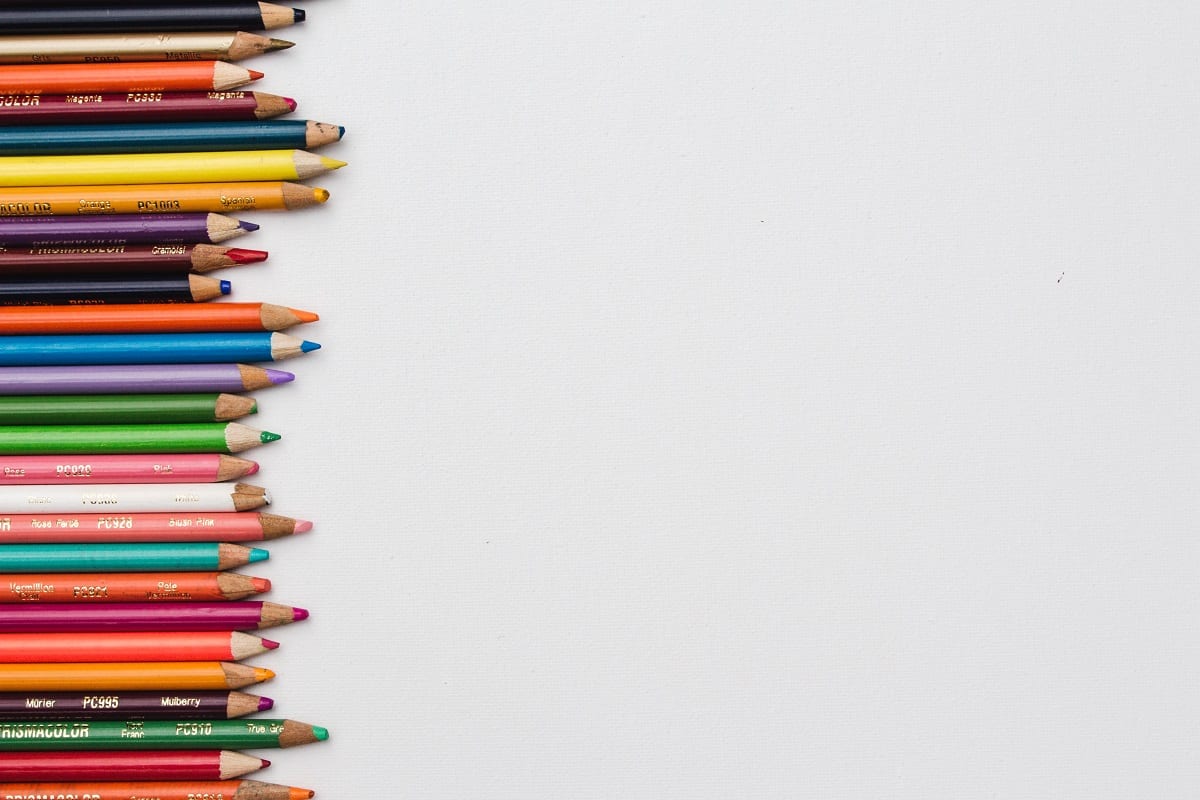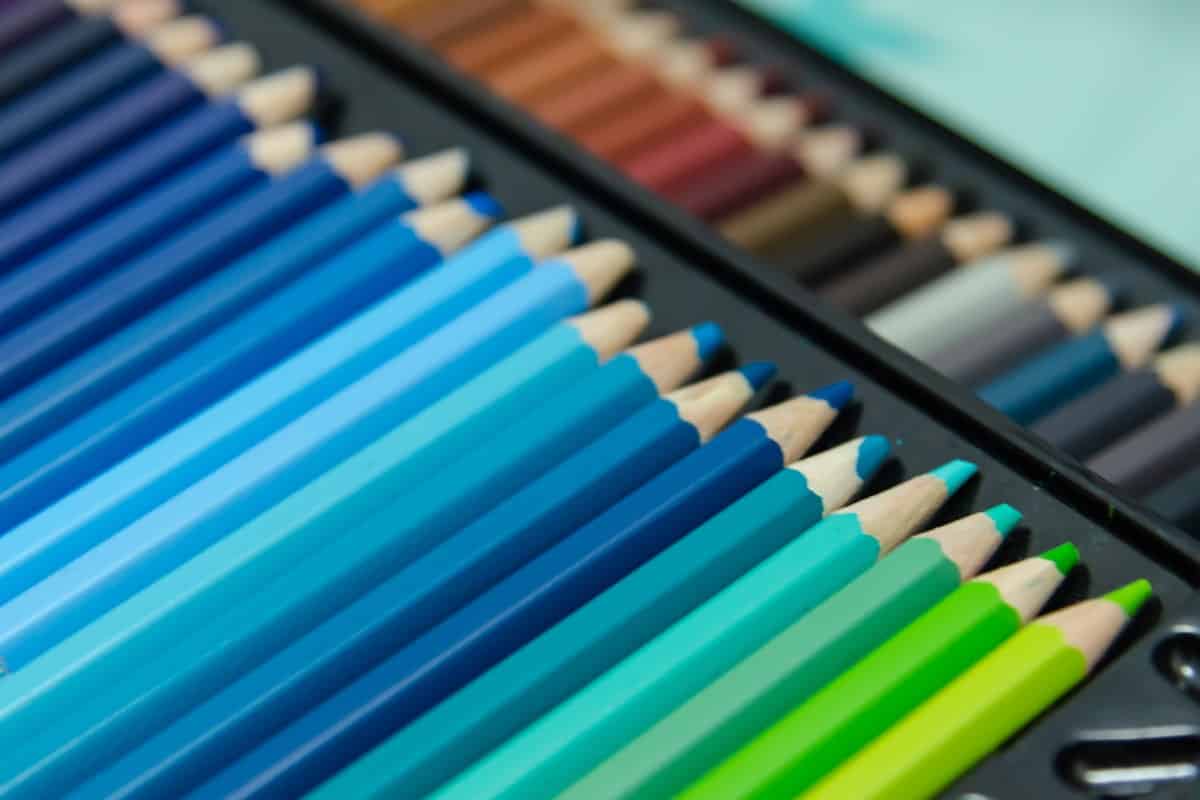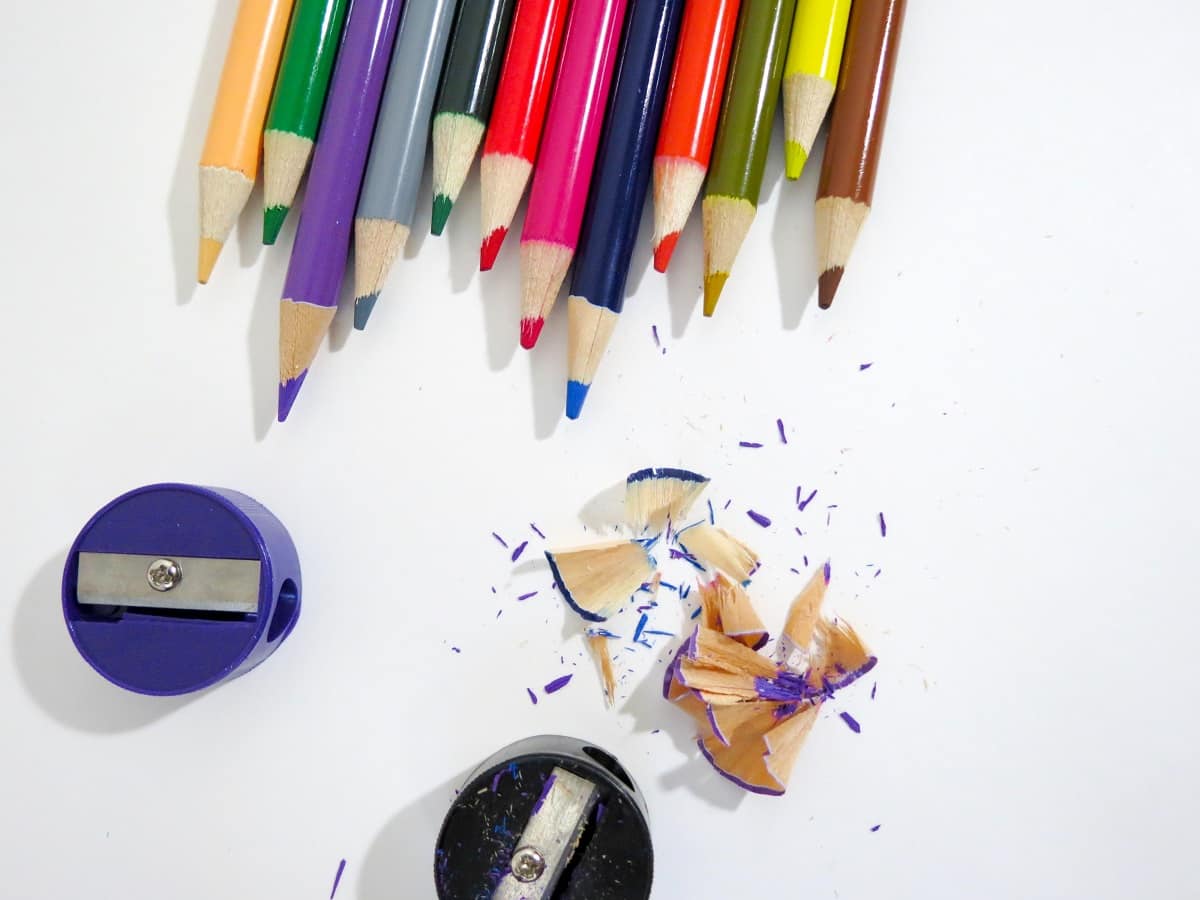Some companies sell colored pencils at higher prices than others, so there must be something more than just lead and wood, right?
An artist visiting a coloring pencil factory must feel like how Charlie felt in the chocolate plant of Willy Wonka. Mixing, milling, and wheeling machines transform wood, clay, and other materials into these high-quality colored pencils.
But you might be wondering what actually goes into the making of a colored pencil? And that’s where we come in, as we’ve listed the entire process, right from cutting the trees to delivering finished products to your homes. At the same time, we’ve talked about the different materials that make these basic yet necessary art tools.
FUN FACT | Did you know, Prismacolor is one of the top notch colored pencils manufacturers?
We have an entire article on how to use Prismacolor colored pencils here to help. These ought to help you and make your shading with colored pencils easier.
Without further ado, dig in!
How Pencils Are Made: Graphite Vs. Colored

Colored pencils are made in the same factories as graphite pencils and use a similar technique, but the differences between the two pencil types are many. For one, colored pencils use a mixture of adhesives, pigments, and binders and not graphite. Since the soft colored cores of these pencils may melt if overheated, they receive less heat than their graphite counterparts.
Apart from that, ferrules and erasers aren’t used in colored pencils. Ferrule is a metal band that attaches the rubber at the end of graphite pencils. Finally, unlike graphite pencils, standard colored pencil leads do not come in a variety of hardnesses.
A. Growing The Pencil Wood
It’s no secret that the wood for colored pencils is derived from trees. In fact, brands like Faber-Castell and Camel derive wood from their farm-grown trees and use them to make high-quality colored pencils.
These trees are grown exclusively to be made into pencils, thereby helping minimize the environmental impact.
The most commonly used wood for this purpose comes from basswood and cedar trees, as the timber is solid and doesn’t bend even under extreme pressure. At the same time, it’s soft enough to be sharpened easily. On the other hand, pine trees are used to make the wood casing of Castell colored pencils.
Pine and cedar wood, being evenly-grained and soft, find usage in artist-grade colored pencils. Basswood is slightly harder and is generally used for budget or student-grade colored pencils.
B. Pencil Factories
Pencil factories date way back to 1900, and Greenpoint, Brooklyn, became the first place to have a pencil factory named the Eberhard Faber factory. It employed hundreds of workers, primarily women. The pencils were named Mongols, as the manufacturers wanted to establish an Asian connection.
Moreover, the first Mongol pencil was yellow-colored, and with time they further added more colors to the line. And the rising popularity of these pencils as art tools prompted the formation of the Colored pencil society in America.
In 1950, the factory shifted its operations to Pennsylvania, and the old factory was converted into condos and offices, as was done with many factories back then. Some of the pencil factories like Derwent are still operational in the US, but most have shifted their operations elsewhere around the world.
Now, let’s get back to how pencils are manufactured. After the trees are chopped down, they are sent to the sawmill, where they’re smoothed and dried. Then, these are cut down into pencil-sized blocks and sent to the factories for further addition of pigments and other elements.
C. Colored-Pencil Leads
The core or colored pencil lead is much softer compared to graphite leads and it’s made from a combination of resins, binders, pigments, and wax in some cases. The general quality difference of a colored pencil is dictated by the amount of pigment used, so higher concentrations of pigments mean better pencils.
Each pencil crayon has a unique recipe, where pigments are mixed in varying proportions with dyes and clays. The pigment is mixed into a paste of binders, additives, and resins as well as oil, wax, or other specialized ingredients depending on the pencil time. Then, the mixture paste is placed into a wooden cylindrical case to give it the desired shape.
On that note, let’s take you through the pigments, binders, and extenders, as well as their importance:
1. Pigments
As mentioned earlier, pigments are the significant difference between professional-grade and cheap colored pencils in terms of both application and price. In premium brands, high-quality pigments and concentration produce more striking and vibrant results.
Also, pigment quality dictates the lightfastness rating of the pencils. A higher rating means that the color won’t fade away very quickly. So, if you’re planning to do an artwork that’ll last for years, it’s essential to consider the lightfastness rating of a pencil.
It’s also important to note that none of the brands can make pencils with perfect lightfastness ratings. This is mainly due to the chemical composition of the pigment used, and organically-derived pigments are more prone to fading when exposed to light than the others.
2. Binders
Binders are glues that keep the pigment in place when mixed together. It ensures that the pigment is evenly distributed throughout the lead core of your pencil.
They are not the same as paraffin wax, gum arabic, or an oily compound, and the type of binders used is determined by the desired output of the lead when it comes in contact with the paper.
3. Extenders
Extenders and binders are used in tandem to keep the pencil lead firm, and the amount of extender used determines if the lead feels buttery and soft or more rigid. Furthermore, extenders allow manufacturers to reduce the price of pencils so that they cost less on the market.
D. How Is The Pigmented Core Encased?
After the wooden blocks are cut into planks, they go through machines that make grooves, and the board on which it’s done is called a pencil slat.
Another machine coats the upper surface with glue after filling the grooves with colored leads. These are then placed below a wheel with another grooved plank on top. If you look closely at these unsharpened colored pencils, you can see where the top and bottom planks are joined.
A machine then paints the casing with a color matching the inner core. The unsharpened edges are painted separately. Many companies apply water-based paint to make the pencils more eco-friendly.
E. Shaping The Pencils
The barrels are cut by a machine in recognizable shapes, generally circular or hexagonal, while another breaks them into individual units. Then, a third machine prints the color numbers and company name on the side of the pencil casing.
The pencils are inserted into a sharpener and then into another machine that uses varnish to seal their blunt ends before they are transferred for packaging. Not only that, but these pastel pencils are also manually inspected by dedicated inspectors who survey each piece for potential flaws.
The durability of the pencil core is tested through a stress breakage testing process. Each pencil must withstand a pressure of at least 5.5 lbs., a lightfastness test, and a drawing endurance test.
F. Packaging And Shipping
Once the pencils are inspected and tested, they are sent for packaging. Colored pencils are sorted and packed in the same way that they are displayed on store shelves. These are then shipped to stores all across the world.
Millions of colored pencils are made and sold worldwide almost regularly. Hence, you can purchase these artist-grade pencils from your local retailer or an e-commerce store.
With increasing environmental awareness amongst people, companies worldwide are making concerted efforts to minimize waste from their production process. This is why companies like Faber Castell use sustainable packaging rather than using plastic.

Types Of Colored Pencils
Generally, two types of standard colored pencils are available on the market, which include:
-
- Wax-based pencils
- Oil-based pencils
1. Wax-Based Leads
Pencils with wax-based cores are probably the most common and popular type that you’ll see on the market. They have smooth and relatively shiny colors, and they are best-known for their blending abilities. As a result, they are loved by most artists due to their ease of use.
Wax-based pencils are used with solvents to help dissolve the pigment and wax on the paper. In this regard, xylene is one of the most common solvents used by artists. It’s chemically similar to paraffin wax and is most effective in clean, blended colors. Major brands like Chartpack manufacture xylene-based solvents.
However, a potential downside of this type is that they experience wax blooms, which occur if the wax oxidizes upon coming in contact with the air. To counter this, use a dry cloth and use gentle wiping motions on the drawing. Alternatively, you can apply a fixative on the drawing to prevent the interaction between the color and air.
2. Oil-Based Leads
Oil-based leads are the opposite of wax-based ones in terms of characteristics and behavior. This variant is pretty rare and is used exclusively only in a few brands like LYRA Polycolor and Faber-Castell polychromos.
Apart from delivering slick and buttery results, primary oil colors appear more vivid compared to their wax-based counterparts. However, xylene can’t be used to dissolve the colors, as it might ruin the canvas you’re working on.
You will also find water-soluble pencils, but they have low ratings on the lightfast scale compared to oil or wax-based pencils.
Is It Possible To Make Colored Pencils At Home?
Sorry, DIYers- colored pencils aren’t something that can be cooked in your kitchen using wood dye and sticks!
The procedure of mixing pigments with extenders and binders and inserting them between molds requires specialized equipment and machines. However, you can make acrylic paints at home, since acrylic polymers, raw oils, and pigments are readily available in stores.

How Are Colored Pencils Made Final Words
That’s all we had to tell you about colored pencils and how they are made! And understanding the different aspects will help you pick the right pencils that will make your art medium stand out.
Another thing we’d like to mention is that today’s pencil factories have numerous modern features to save time, minimize waste and to be energy-efficient. Likewise, we all can do our part by purchasing pencils that are only made of sustainable materials.
With that, it’s a wrap, but keep an eye on this space for more such reads. Till the next time, goodbye and take care!


